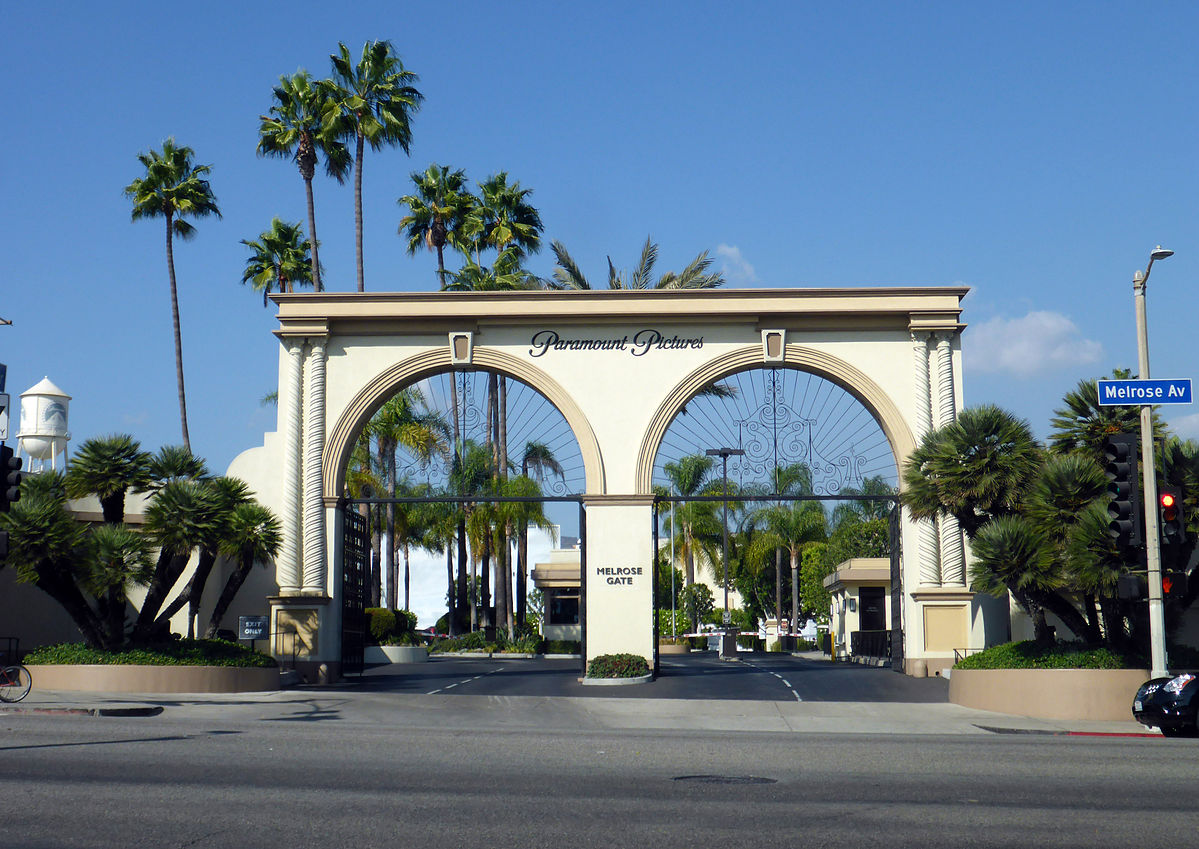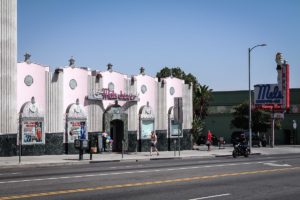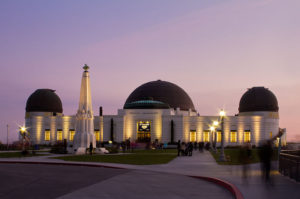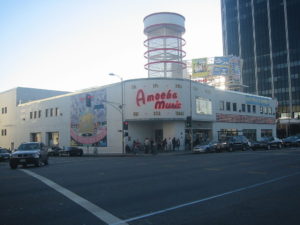Located at the southern end of Hollywood, the legendary Paramount Pictures studio perfectly encapsulates the evolution of the Los Angeles film industry, from the silent film era to the birth of sound, and through the rise of television. It stands as the last major studio in the Hollywood area, symbolizing Hollywood itself.
Paramount Studios began in 1913 in a rented stable near Sunset & Vine, moving to its current location on Gower Street in 1926, occupying an existing studio built in 1917. (That historic barn, where Cecil B. DeMille filmed “The Squaw Man,” is now open to the public as the Hollywood Studio Museum.) Paramount was home to early film stars such as Mae West, W.C. Fields, and Mary Pickford, as well as directors DeMille and D.W. Griffith. In the Golden Age of Hollywood, Paramount’s stars included Clara Bow, Gary Cooper, William Powell, Claudette Colbert, Alan Ladd, and Marlene Dietrich.
The studio’s interior, bounded by Melrose Avenue, Gower Street, Van Ness Avenue, and the Hollywood Forever Cemetery, contains two historic districts: the Paramount Pictures Historic District and the RKO Studios Historic District, as in 1977, Paramount Pictures acquired the neighboring land of the historic RKO Studios from Desilu Productions.
The Radio-Keith-Orpheum Corporation (RKO) was formed in the late 1920s, merging vaudeville theaters, film production, and radio networks. To promote the union of radio and film, the company conducted an elaborate advertising campaign centered on the recognizable image of a giant radio tower perched on a globe. RKO was a significant studio in its time, having produced masterpieces, with Orson Welles’ ‘Citizen Kane’ perhaps being the most iconic. Paramount’s current studio also includes the Streamline Moderne KCAL Building, completed in 1935 as a broadcasting facility.
Both Paramount Pictures and RKO Studios are associated with the “Golden Age” of Hollywood, also known as “The era of the major studios.” As competition increased, smaller companies merged with larger ones, and film production adopted an industrial model. By 1920, the American film industry was largely controlled by only eight companies, known as the “Big Eight.” These companies were Fox, Warner Brothers, United Artists, RKO, Columbia, Metro (now MGM), Universal, and Famous Players – Lasky (which is now Paramount), controlling ninety-five percent of film revenue in the United States.
These studios set global precedents for film production and required modern facilities for producing, distributing, and exhibiting films. Although the 1920s, 30s, and 40s witnessed ambitious industry expansion, the era of the major studios came to an end in 1949 following a federal investigation into antitrust violations. Because Paramount and RKO continued producing films and made significant developments in radio and television in subsequent decades, they perfectly reflect the post-war entertainment industry’s development to adapt to changing tastes and social patterns.
The studio’s buildings and structures reveal the practices of Hollywood’s “Golden Age,” where production, distribution, and exhibition were fully integrated in one place. As a result, the facilities reflect a wide range of uses, styles, and typologies. Buildings include administrative offices, pre and post-production facilities, sound stages, utility buildings, and actor support services. The studio also preserves its original street patterns, circulation roads, and landscaping.
The studio behind classics like ‘The Godfather’ saga, or hits like the ‘Mission Impossible’ series, covers an area nearly as large as Disneyland. During peak season, the studio employs over 5,000 people. Simply driving around the studio walls can give you an idea of its enormous size. A tall water tower with the classic blue Paramount logo still looms over the studio, a reminder of the days when the studio had its own fire department and even a hospital.
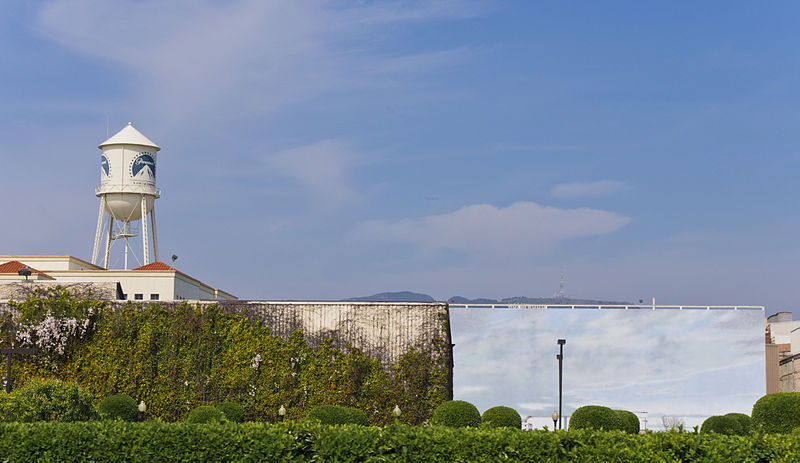
The studio has a notable landmark visible from the outside, the ‘Bronson Gate‘, a historic arched iron gate built in 1926 that provides entrance to the studios from the northern end of Bronson Avenue. It’s a gate that has appeared in many films, such as in ‘Sunset Boulevard‘ by Billy Wilder. Additional iron filigree on top of the gate was added to prevent fervent fans of Rodolfo Valentino from climbing over the fence. Interestingly, actor Charles Bronson (whose real name was Charles Buchinski) took his name from this mythical gate.
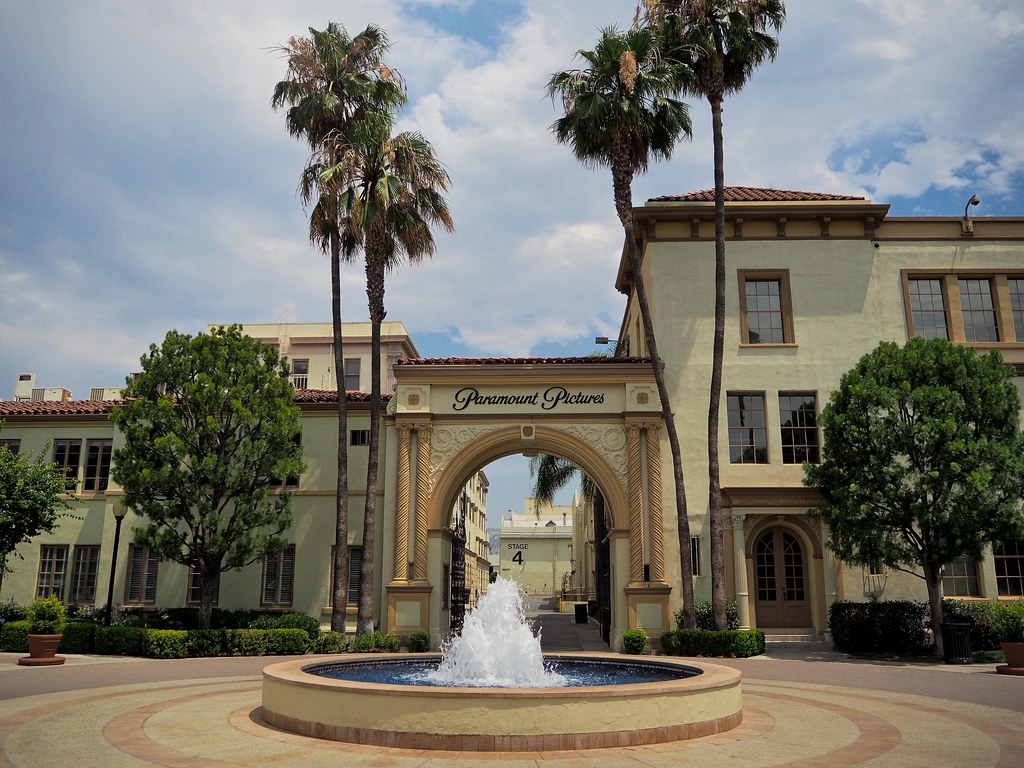
On Melrose Avenue, you’ll find the ‘Melrose Gate‘, double-arched gates built in the style of the Bronson Gate.
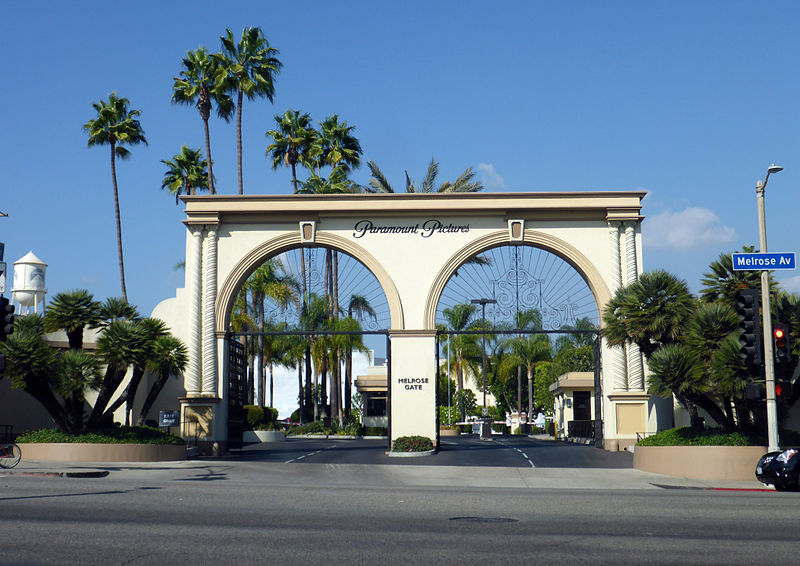
Unlike others, Paramount Pictures is currently a fully operational studio, where TV series and shows continue to be filmed. Other studios like Fox, HBO, Sony, or Amazon rent facilities here. Some recent series filmed there include “Glee,” “Community,” “Happy Endings,” “Numb3rs,” “Medium,” “Everybody Hates Chris,” “Frasier,” and “JAG.” Not as many films are shot anymore, as most major film productions are filmed in other states (especially Georgia), Europe, or Canada.
The studio can be visited through their organized tours (highly recommended for all cinephiles), consisting of a two-hour walking tour where you can explore all the ins and outs of a true and historic dream factory.
